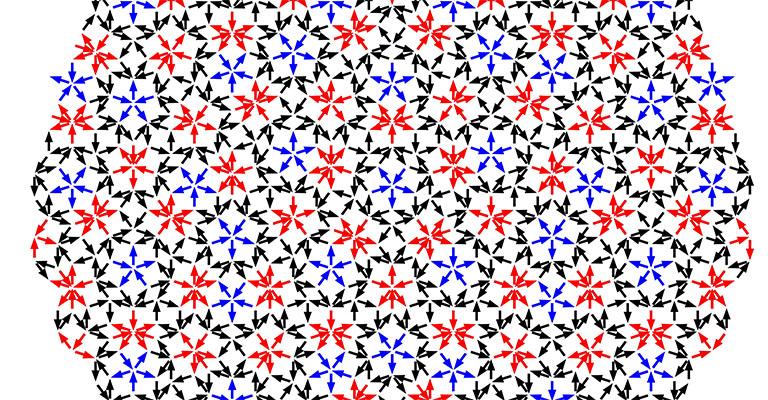Prof. Olmsted Co-Authors Paper in Nature Physics
Posted in News Story

December 11, 2017 — A paper co-authored by Georgetown College physics professor Peter Olmsted has been published in the journal Nature Physics.
The paper, “Frustration and thermalization in an artificial magnetic quasicrystal”, is the result of research Olmsted began at the University of Leeds in the United Kingdom.
“The goal of the project was to prepare a novel form of a magnetic material called spin ice and measure its behavior under different temperatures and magnetic fields,” Olmsted said. “My interest was to understand the kinds of ‘phase transitions’ that may appear since I study the theory of phase transitions in diverse materials such as liquid crystals, polymers, and biological materials.”
Alongside Leeds’ Professor Chris Marrows, Olmsted co-supervised Dong Shi, an experimental physics PhD student who conducted thesis research on magnetic materials.
Dong created a complex pattern of nanomagnets in the arrangement of a “Penrose tile.” The pattern is named after British mathematician Sir Roger Penrose, the first modern theorist to develop it (though it should be noted that the same pattern was discovered in 13th Century Islamic architecture).
In the magnetic Penrose tile, each magnet is only a few hundred nanometers long and can flip its magnetic North and South directions while maintaining the pattern. Dong measured the orientations of North/South directions across the whole pattern and found a peculiar low-energy structure in which a “skeleton” of nanomagnets is fixed, but the other nanomagnets can have randomly flipped North/South directions.
The paper represents the first time that the magnetic orientation was predicted and then measured using the Penrose tile arrangement. It represents a breakthrough in physicists’ understanding of frustrated systems — systems in which conflicting forces between atoms create complex structures.
“We were surprised that Dong’s calculated ground state turned out to be so close to what we found experimentally,” said Olmsted, who helped the team analyze, understand, and interpret their results. “A collaborator in Italy then spent a long time modeling the results using computer simulations to help us understand the configurations.”
The research also has real-world implications in the field of magnetic storage systems, like USB or flash drives.
“There are many way to use magnetic materials for data storage, like hard drives, USB drives, and MRAM in smartphones,” Olmsted said. “In principle, arrays such as these can be used to encode more complex information, although these applications are still a long way away from this fundamental research in magnetic nanotechnology.”
Olmsted, who left Leeds in 2014, now holds the Joseph Semmes Ives Chair in Physics and serves as Director of Georgetown’s Institute for Soft Matter Synthesis and Metrology.
— Patrick Curran, Lead College Writer/Editor, Georgetown College
